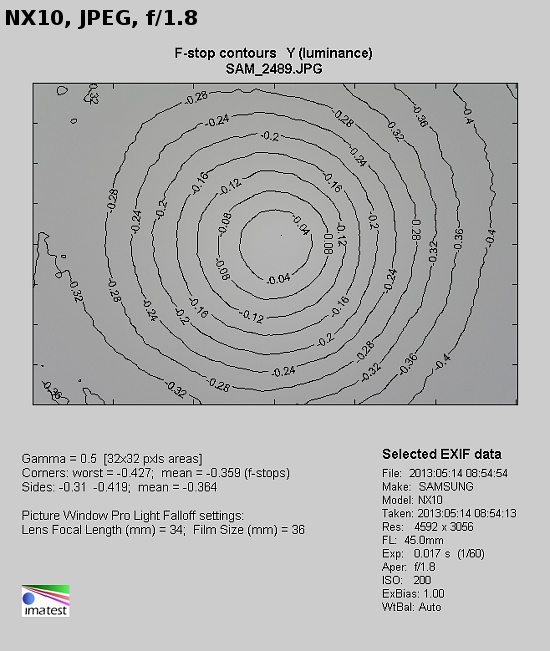Samsung NX 45 mm f/1.8 2D/3D
8. Vignetting

That aberration is slight already at the maximum relative aperture, where the measurements show the brightness loss in the corners amounting to only 12% (-0.36 EV). That value decreases to 9% (-0.27 EV) by f/2.8.
Please Support UsIf you enjoy our reviews and articles, and you want us to continue our work please, support our website by donating through PayPal. The funds are going to be used for paying our editorial team, renting servers, and equipping our testing studio; only that way we will be able to continue providing you interesting content for free. |
- - - - - - - - - - - - - - - - - - - - - - - - - - - - - - - - - - - - - - - - - - - - - - - -
Of course we would be hard-pressed to believe in such great results so we checked the situation in RAW files. It happened the values were just 2% higher so as unreal as those reached in JPEGs. It seems the body of Samsung tries to correct the vignetting of the lens even if it doesn’t have that particular lens’s specifications in its database.
If you want to know the real value of vignetting it’s enough to go back to the previous chapter and look closely at the defocused light circle in the corner of the frame by f/1.8. As you can notice over half of light disappears – and here you have a result which can be considered real when it comes to a construction of such small physical dimensions as the Samsung 1.8/45.
 |






